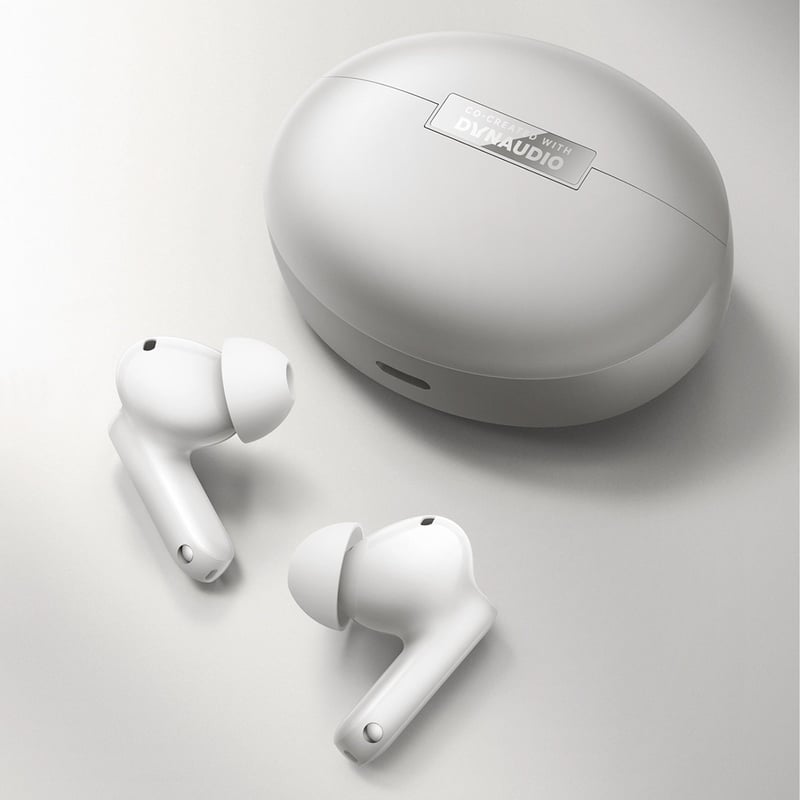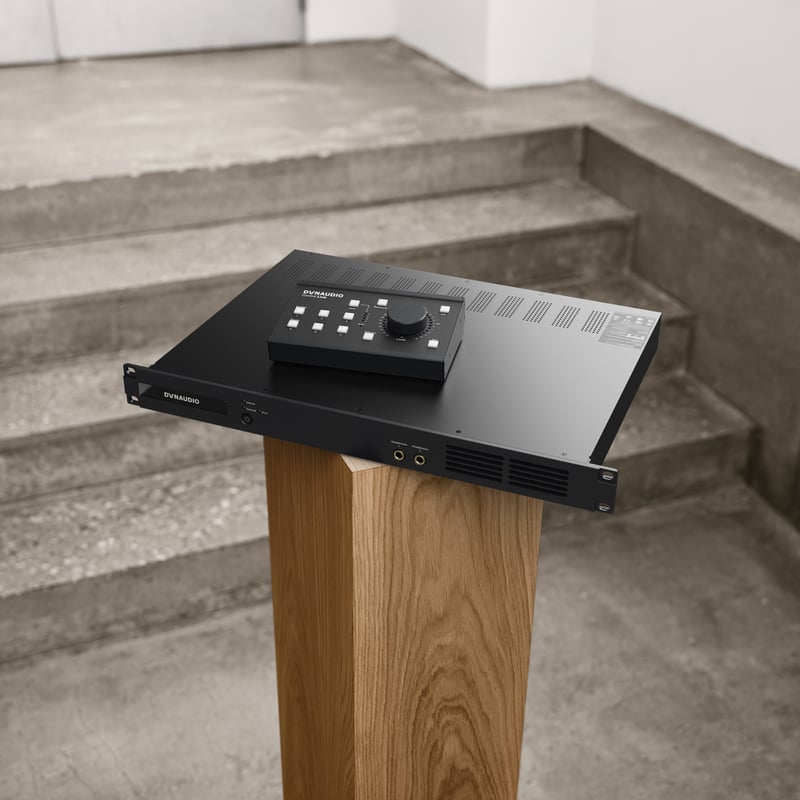This month's questions
This month's topic was loudspeaker drivers, and boy, did we get many great questions:
- Size of voice coil diameter
- What cone material to use
- Why that magnet instead of the other
- Home vs. Car loudspeaker drivers
- And many, many more...
To help us cover as many questions as possible, we enlisted the help of Andreas. He's one of our loudspeaker driver experts. In the video below, you can see all of Andreas' answers to these insightful questions.
Subscribe now: Ask The Expert on YouTube
Questions and answers
Why use a certain voice coil diameter in Driver design?
At Dynaudio, we have been using rather large voice coils for some time. But, Neil and Uwe point out that we're moving towards smaller ones now - and right ask the question: "Why?"
Why does Dynaudio only use one material for its cone design?
Udo, Stefan, and Phillip were wondering: "why don't we experiment with other materials than MSP? Why not use Kevlar?"
Is there such a thing as a 'fast' driver?
Wait what... Is there such as thing as a 'fast' driver. And if so, what is it?
What's the difference between drivers for Home/Car applications?
Is there a difference between the loudspeaker drivers we put in our Home/Car products? The simple answer: Yes and no.
Why don't Dynaudio always use neodymium magnets in their drivers?
Yeah? Why don't we always use neodymium?
What is the life cycle of loudspeaker parts?
How long do different parts of a loudspeaker actually last?
How does a passive crossover affect loudspeaker drivers?
Is the loudspeaker drivers performance affected by the crossover, and why does Dynaudio use rather simple ones?
Thank you!
We want to give a big thanks to all of those who posted questions. Unfortunately, we can only steal our experts away for a limited time, so haven't been able to answer each and every one of the great questions we received. As we did last time, we'll make sure keep an eye out for any interesting questions to bring to the next episode of Ask The Expert.
Subscribe now: Ask The Expert on YouTube
If you have any more questions, please share them with us - and the rest of our community - on our Facebook page or directly in the comment section on YouTube.
All the best,
Andreas and Christopher
Like that? Watch this...
What is Digital Signal Processing? In the fifth episode of Ask the Expert, we asked Jan Abildgaard Pedersen, our CTO, exactly that - watch here.
How do you take proper care of your loudspeakers? It's a question we get so often that we decided to do an episode of Ask the Expert about it.
How do you place and calibrate your loudspeakers? Watch as Otto Jørgensen, our Customer Care Manager, discusses exactly this in the first-ever episode.
Transcript
Christopher: Welcome to Ask the Expert. My name is Christopher and with me today I have Andreas. And Andreas would you like to tell us what you do in the Dynaudio?
Andreas: Sure. I am a loudspeaker driver designer. I design loudspeakers from idea to final product. Mainly for the automotive industry but also for home.
Christopher: And can you tell us what your latest project has been?
Andreas: Sure! That is the Contour C60
Christopher: You know that is a great project to be part of.
Andreas: Definitely.
Christopher: Today’s topic is obviously drivers. So let’s get started with the first question.
Andreas, Neil and Uwe, they have asked us about our voice coils. And they pointed out that in the past we have had rather large voice coils and now we are moving towards smaller voice coils. Can you comment on that?
Andreas: Sure. We have correctly been using large voice coils with aluminium wire. And now we have, through console simulations, achieved optimum performance with just a slightly smaller voice coil. So it is not like we are going from 3 inch to 1 inch or even smaller then that. But we have found the right optimum.
Christopher: Can you comment on why we are moving toward that smaller voice coil?
Andreas: Sure. We would like to improve our bass performance and to improve your bass you need longer winding height and in order to gain that we have used outside magnets instead of the inside magnets and we increase winding height and hence we increase the period of – the amount of time that the voice coil is within the strong magnetic field in the magnet system so we can actually get better bass performance. Optimal bass performance.
Christopher: And the benefits beside optimal bass performance. What are those? -of using the smaller…
Andreas: It is we can achieve the same resonance frequency with the smaller voice coil but with longer winding height so it is a matter of pulling in your parameters and we have found the right optimum.
Christopher: And I guess a lot of this is because we have continuously become smarter and by using these new tools that you have talked about.
Andreas: Sure, sure. And we have been using the large voice coils for nearly 40 years. Improving them to a point where we cannot really push them any further. That is why we need to - dig into the new ways of achieving best possible sound.
Christopher: The next question is about the materials that we use for our drivers. Udo and Stephen, they point out that we have been using MSP for quite a long time and they asked for why haven’t we tried or experimented with other materials.
Andreas: Sure. Good question. We have experimented with other materials. We have been using MSP Magnesium Silicon Polypropylene for probably for nearly 40 years. We have found the right compromise, we have found the right amount of damping and stiffness that we need. And for instance Kevlar lacks damping. You can get that in other ways But in MSP we get the best of both ones.
Christopher: And I guess that because we use the same material for so many years that means that we also gotten to … know it very well so we know its restrictions and we know its benefits.
Andreas: For sure, for sure… Definitely. And while looking at other materials we have come up with something that is highly damped or highly stiff and that creates problems for us when using that in the cabinet and with the crossovers.
Christopher: So MSP is just the best thing…
Andreas: For us… Magnesium Silicon Polypropylene is the best material so far. And when we one day find a new material then we will probably switch to that.
Christopher: I am actually really impressed with how you say MSP in full. No way I am going to say that so I will just stick with MSP. Is that ok?
Andreas, the next question is from Ernst and it is about fast drivers. It is something that he comes across quite a lot on audio forums. And he asked what is a fast driver.
Andreas: If we go into the physics behind what is actually moving - the cone. You have the coil and the magnet system. You have a magnetic field acting on the coil and that is the BL factor. And then you have the current running from your amplifier so that is actually determining your amount of force acting on the cone. If you have a heavy cone and a small force – that makes it slow. You could go into a really strong amplifier –and hence increase the I. Or you could build a strong magnet system with a good voice coil and then have a more normal amplifier so you have high force acting on a certain moving mass.
Christopher: But from what I know about this: It seems to me that you can’t only look at the driver right? It is about – it is something more it is a whole speaker, you also have to look at the cabinet and so on…
Andreas: Sure. It is… it is a holistic view of it. You need a good driver and the right cabinet and the right amplifier. And/or crossover or DSP. So it is a combination of all the part going into the system. We call it a system because it is not just a driver. So you can… If you have a really good driver, you can actually mess that up by putting it in a wrong cabinet or using a weak amplifier.
Christopher. Ok. Thanks.
Andreas, Chuck he has Dynaudio both at home and in his car. He started wondering if there was actually a difference between the drivers in his large speakers at home and the drivers in his car. Is there?
Andreas: The simple answer is Yes and no. No because from the outside they look the same. We are using the same material for the cone and the surround but what is beneath the cone is different for the drivers that goes into a car. We have to be able to withstand the environment in the car. High temperature high humidity Low temperature. We need to change some of the glues and some of the materials being used in order to be able to withstand these environments.
Christopher: But I guess when we put much bigger drivers in a car it is also about the different safety requirements that you have to live up to - because the cars are… You can get in a crash in a car, that is difficult at home. At least with a loudspeaker. So what kind of requirements do we have to live up to?
Andreas: For Volkswagen – our huge customer in Germany. We are producing a different basket made out of plastic. And we have reduced the weight of the magnet system. We had to fulfil a lot of requirements. We are doing a lot of validation tests in these drivers. Door slam test for instance. In some cases you have to be able to withstand 100 000 door slams and also when you are driving on rough surfaces the driver should not fall apart of course. Again temperature, humidity… So we have developed drivers for that specific purpose but in our aftermarket kits which look more like our home drivers, we have changed what is needed to change in order to withstand the environment in the car.
Christopher: So I guess the simple answer is as you said…
Andreas: Yes and no.
Christopher: Yes and no.
Daniel, he asks why it is that we don’t always use neodymium magnets in all of our drivers.
Andreas: The magnetic moment in neodymium is way higher than the magnet moment in ferrite. And depending on the application you desing your driver to fit into that application. So if you need high performance you will use neodymium, if you need longer stroke you would use ferrite and get the same performance that way just by increasing the amount of material.
Christopher: So it is really about matching the magnet to the given application.
The next question is from Martin and Ernst and they want to know about the life cycle of different parts of the loud speaker.
Andreas: We use for instance ferrofluids, MSP copper aluminium… Some of the parts that goes into the driver. But it all depends on the environment you place your speaker in. So if you place your speaker in the desert with high temperature and low humidity they will probably not last for decades. But if you place your speaker in your living room with normal conditions then they would last for 20 – 30 – 40 years…
Christopher: And I know you have a funny story about six drive units we have found.
Andreas: Yes. We found six drivers on stock which were 18 years old. And we put them through the end of line test. That means that when you have produced a batch of speakers we test them for various perimeters and all of these drivers they passed.
Christopher: That is pretty impressive.
Let’s talk about passive crossovers because we have this very interesting question from Wilson. He asks what is… how passive crossovers actually affect the driver.
Andreas: Yeah. For instance take a three way system. You have a crossover here. And it sends the signal to the woofer to the midrange and to the tweeter. And it actually protects these drivers. So it means that the tweeter will not be playing the bass frequencies. It cannot do that. It will be destroyed. The midrange is not a good tweeter. So we actively protect it from high frequencies so that’s how the crossover acts on our drivers.
Christopher: And I know that we use something that is called lower order crossovers.
Andreas: That is right. We design our speakers and the crossovers to have less components in the signal path.
Christopher: What is the benefit of having less components in the signal path.
Andreas: That is easy. You don’t want to deteriorate your sound coming from your source to your loud speaker. So the fewer components you have the more original sound you get.
Christopher: That makes sense
Andreas, thanks for spending your time with us. It has been really great to have you on.
Andreas: Thank you.
Christopher: I want to thank you all guys for sending us your very good questions. It has been a lot of fun to answer them with Andreas today. If you have any comments at all please feel free to share them all in the comments section below. We see you next time.
Sign up to get more great articles
Nothing compares to the satisfaction of knowing – for a fact – that something is as good as it gets






3 comments